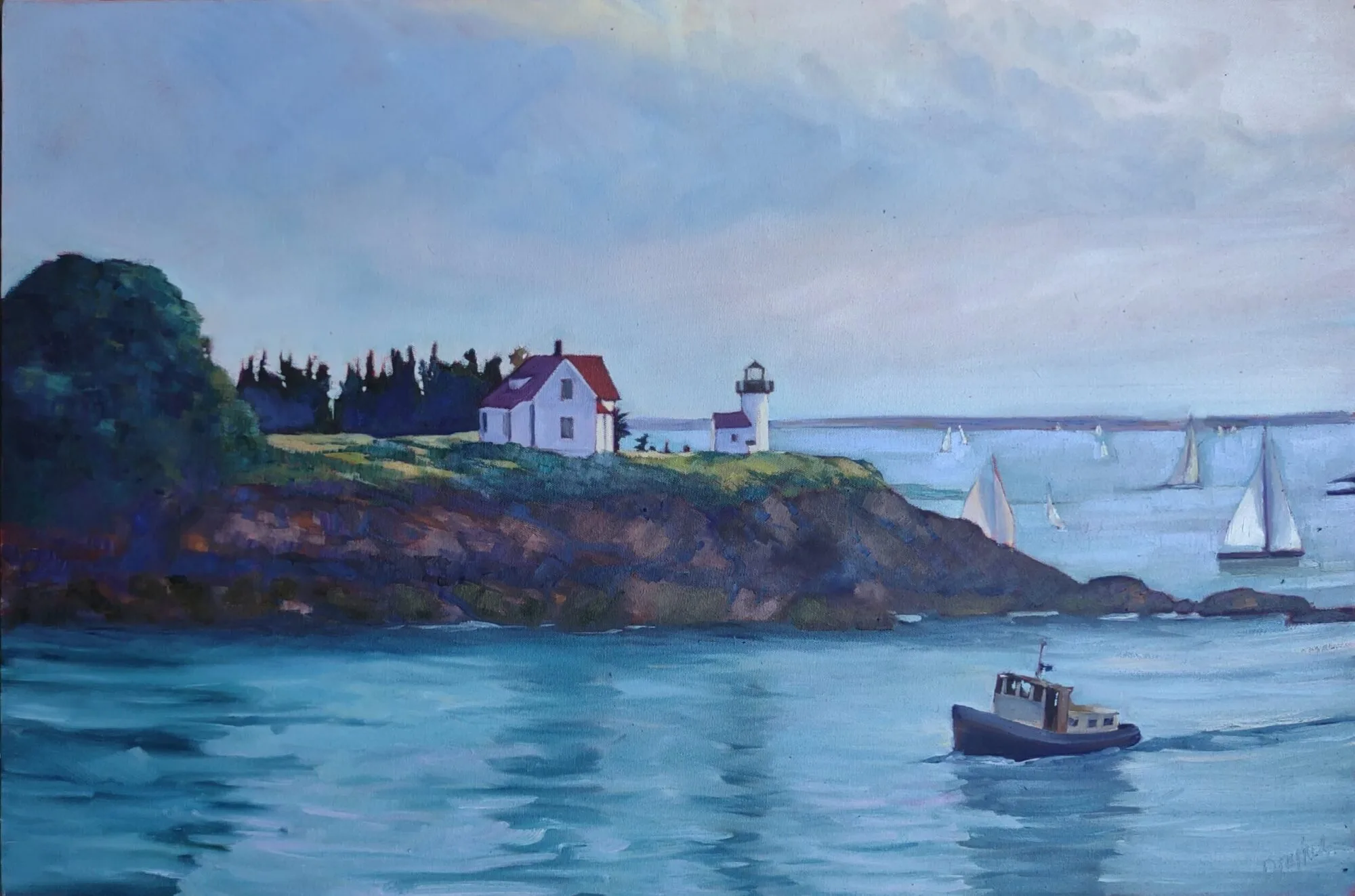 |
|
Castine from Fort George, 1856, by Fitz Henry Lane, The town is a little more populous today.
|
We interrupt the feverish painting of a lobster buoy to announce that I will again be painting in the 2014 Castine Plein Air Festival from July 24 to July 26.
Castine is a beautiful old town off the beaten path in Hancock County, Me. It is home to the Maine Maritime Academy. Like my home turf in New York, it has been under Native American, French, English, Dutch, and American dominion. But it’s a rare gem in that all those levels of occupation are clear to the casual visitor. They have great museums and their historical society has taken the time to clearly mark out historic sites.
 |
| One of two paintings I did at Castine Plein Air in 2013 of the tide turning at Wadsworth Cove. |
Castine’s location at the mouth of the Penobscot River estuary gave control of the interior, which meant access to furs and timber. This is why it was settled early (seven years before the Plymouth Colony) and tussled over frequently. It was briefly the capital of French Acadia.
It even had a nobleman-gone-native, in the character of Baron Jean-Vincent d’Abbadie de Saint-Castin, who was married (in succession) to two Abenaki women. Unlike New York’s Sir William Johnson, however, he appears to have been the real thing, rather than a jumped-up fur trader granted a title.
 |
| And the other one. |
But all this history is overlaid not by the ruins of great mill towns, as it is here in New York, but with a “stunning collection of beautiful landscapes, rugged coastlines, historic architecture, and an abundance of New England charm,” as the Castine Arts Association quite accurately boasts.
This year, painters will be working on site for three days, with the festival culminating in a sale at the Harborview Room at the Maine Maritime Academy. They’ve doubled the exhibition space—which is grand, because it was tight—but they can’t double the hotel occupancy in the area. If you want to catch this fantastic event, you’ll book somewhere early.
Let me know if you’re interested in painting with me in Belfast, Maine in August, 2014 or in Rochester at any time. Click here for more information on my Maine workshops!



























